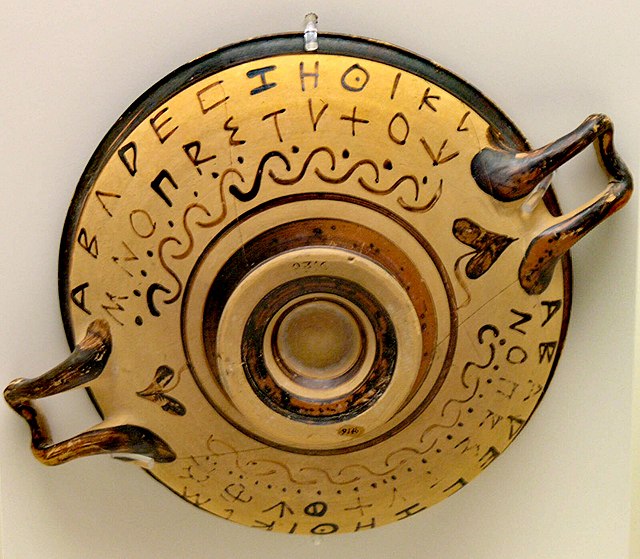Koppa or qoppa is a letter that was used in early forms of the Greek alphabet, derived from Phoenician qoph (𐤒). It was originally used to denote the sound, but dropped out of use as an alphabetic character and replaced by Kappa (Κ). It has remained in use as a numeral symbol (90) in the system of Greek numerals, although with a modified shape. Koppa is the source of Latin Q, as well as the Cyrillic numeral sign of the same name (Koppa).
Corinthian stater. Obverse: Pegasus with koppa beneath, for Corinth. Reverse: Athena wearing a Corinthian helmet.
Corinthian hemiobol. Obverse: Pegasus with koppa beneath, for Corinth. Reverse: Aphrodite wearing a sakkos headband.
The Greek alphabet has been used to write the Greek language since the late 9th or early 8th century BC. It is derived from the earlier Phoenician alphabet, and was the earliest known alphabetic script to have distinct letters for vowels as well as consonants. In Archaic and early Classical times, the Greek alphabet existed in many local variants, but, by the end of the 4th century BC, the Euclidean alphabet, with 24 letters, ordered from alpha to omega, had become standard and it is this version that is still used for Greek writing today.
Dipylon inscription, one of the oldest known samples of the use of the Greek alphabet, c. 740 BC
Early Greek alphabet on pottery in the National Archaeological Museum of Athens
A 16th-century edition of the New Testament (Gospel of John), printed in a renaissance typeface by Claude Garamond
A page from the Codex Argenteus, a 6th-century Bible manuscript in Gothic






